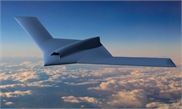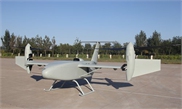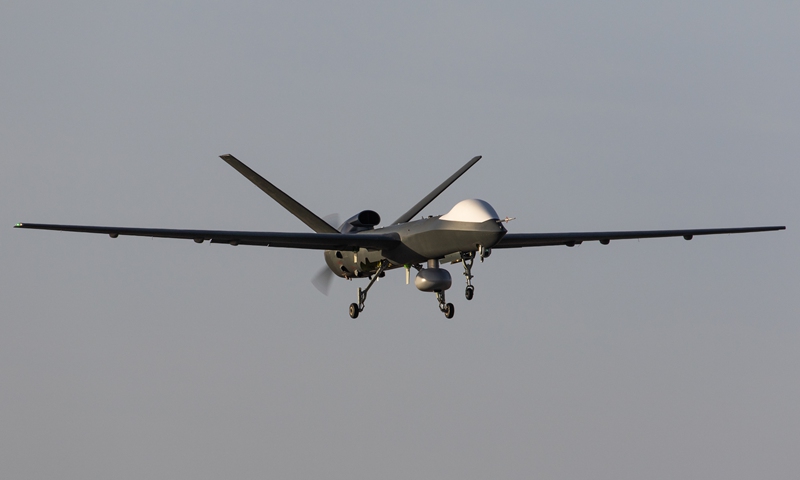
A maritime version of CH-5 drone. Photo: Sun Jing
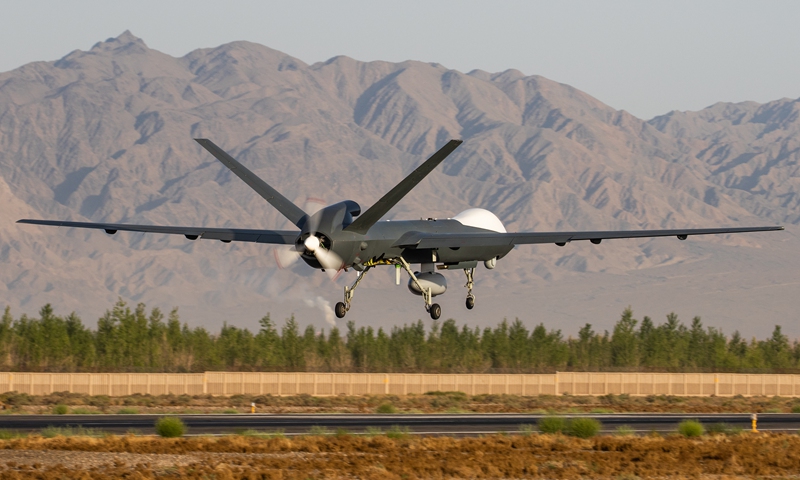
A maritime version of CH-5 drone. Photo: Sun Jing
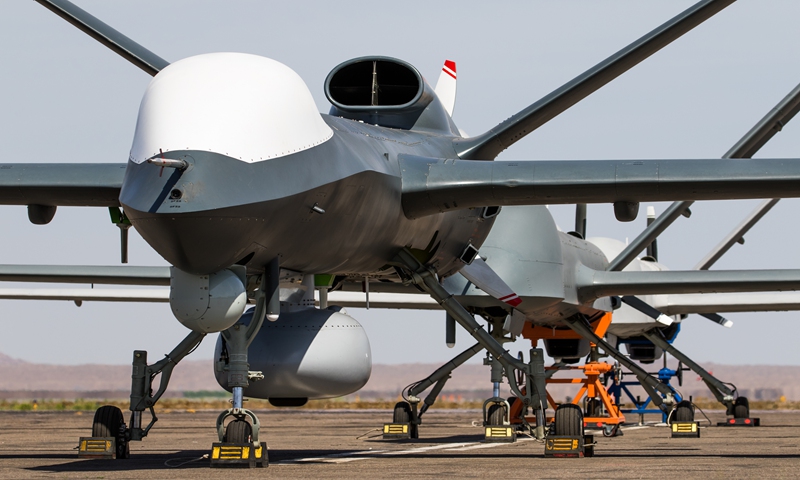
A maritime version of CH-5 drone. Photo: Sun Jing
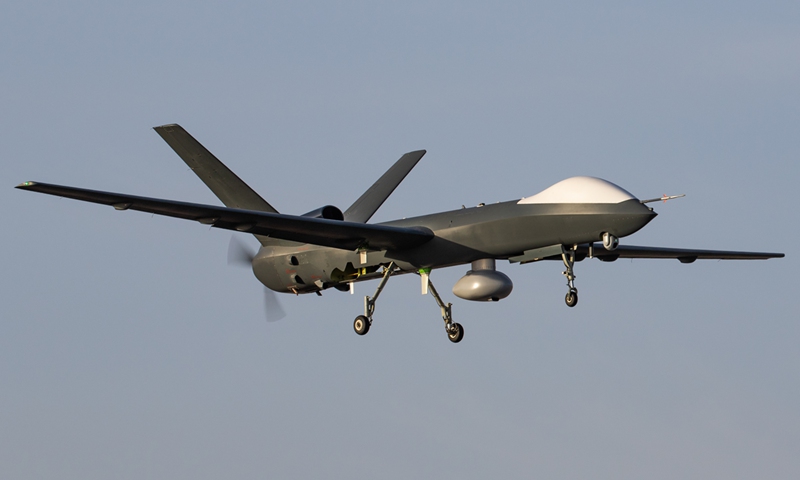
A maritime version of CH-5 drone. Photo: Sun Jing
China recently conducted the first flight test of a maritime version of the domestically developed CH-5 drone, its developers said on Thursday.
In an exclusive interview with the Global Times, the development team of the CH UAV company revealed that the new version of the CH-5 drone is a medium-to-high altitude, long-endurance large drone system that can cope with complicated and dynamic oceanic conditions.
The drone system could host various payloads, including photoelectric devices and wide-region search radars, and is capable of carrying out surveillance and monitoring missions at sea, the developer said.
The linkage testing of the radar systems was completed in the test, said the development team, who also said that the drone will be deployed next to genuine sea environments for further tests.
Compared to the standard version of the CH-5, the maritime version was improved to cope with high-temperature, humid and salt fog situations at sea. For instance, connectors of parts were replaced with titanium to adapt to maritime environments, the company said.
The primary tests of the drone provided a good foundation for future experiments, they noted.
The standard version of the CH-5 is a medium-to-high altitude long endurance armed reconnaissance drone with a fully automatic flight control system, jam-proof data chain and all-weather payload, according to a separate statement the company sent to the Global Times.
With a wing span of 21 meters and a ceiling of 8,300 meters, the standard CH-5 has a maximum endurance of 35 hours, a top speed of 300 kilometers an hour, a maximum takeoff weight of 3,300 kilograms, and a payload weight of 480 kilograms.
The standard CH-5 can conduct short takeoff and landing in plateau regions and is easy to use, reliable and cost-effective, the company said, noting that it can be customized with additional equipment, including fire control radar, electronic countermeasures and jamming devices.
It also has civilian applications, like airborne geophysical exploration, the statement said.



